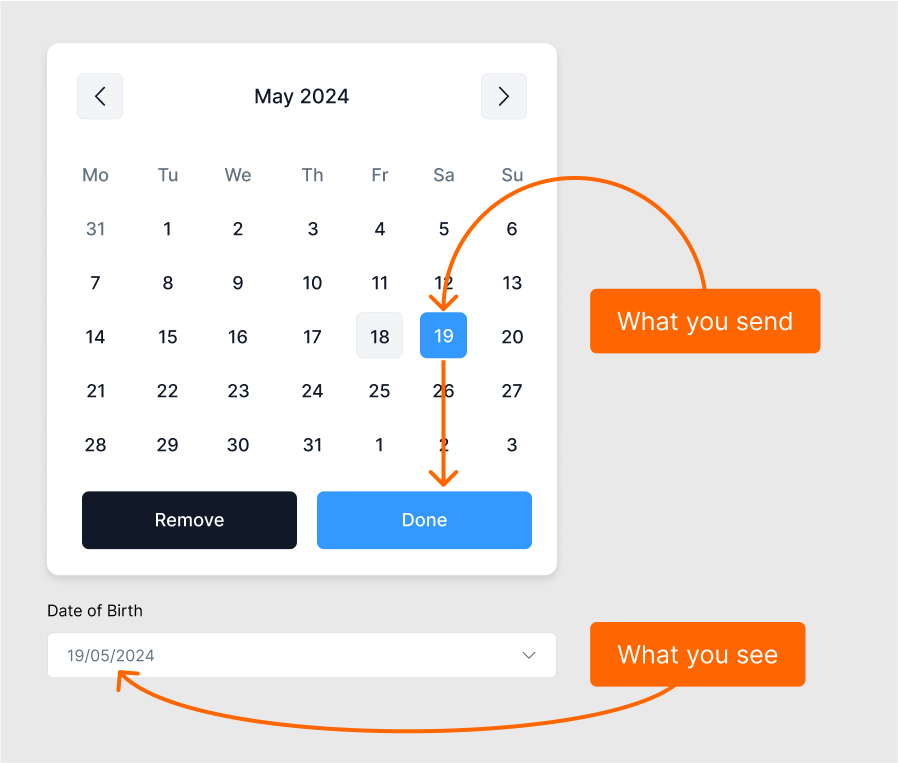Introduction
Certain concepts serve as guiding lights in the broad and constantly changing field of user experience (UX) design, showing the way towards the creation of natural, inclusive, and user-friendly interfaces. One such idea is Postel's Law, which is frequently praised as the foundation of digital communication. But what exactly is Postel's Law, and why is it important in UX design? In this article, we examine the fundamentals of Postel's Law and learn about its importance in influencing future digital experiences.
The Essence of Postel's Law
Postel's Law, also called The Robustness Principle, is a key design principle for communication protocols and systems. In the nascent stages of network development, Internet pioneer Jon Postel coined the following statute:
Be conservative in what you send, be liberal in what you accept.
Postel's Law fundamentally captures the spirit of adaptability and empathy in digital interactions. It encourages designers and developers to put user demands and experiences ahead of strict adherence to technical specifications, arguing instead for a generous and tolerant approach.

The Heart of Postel's Law: Empathy and Understanding
Effective UX design is centred on empathy in a society where digital interfaces are the main means of accessing information, services, and social relationships. Postel's Law reminds us that there is a human being with specific needs, preferences, and limits behind every click, tap, or swipe. No matter the device, browser, or level of technical expertise, designers can develop experiences that work for a wide range of consumers by taking a liberal approach to accepting user inputs and choices.
Understanding the Impact on User Experience Design
What consequences does Postel's Law have for both designers and users, and how does it apply to UX design specifically? Let's investigate its uses in more detail and consider how important it is for creating empathic and meaningful digital experiences.
Fostering Interoperability: Compatibility and connectivity are critical in an increasingly linked digital economy. To facilitate smooth communication and integration between platforms and services, Postel's Law encourages designers to create systems that smoothly handle a variety of data formats, protocols, and devices. Designers may enable data transmission and cooperation by following standards and supporting open formats. This will enable users to move between digital environments without difficulty and without running into compatibility issues or friction spots.
Cultivating User Trust and Confidence: Any successful digital relationship is built on trust. Postel's Law highlights the significance of creating user-confidence and trust-inspiring systems through consistent behaviour, strong mistake handling, and clear feedback. By sending fewer messages and making sure the results are reliable and consistent. Over time, designers may develop trust and loyalty by building a sense of dependability and reliability in users. Additionally, designers can reduce user discomfort and build strength into their systems, improving the user experience overall, by being liberal in what they accept and smoothly managing a broad range of inputs and interactions.
Practical Applications of Postel's Law in UX Design
Now that we understand the fundamentals of Postel's Law, let's explore its practical applications in UX design:
Input Validation and Error Handling
In user interfaces, input validation plays an important role in ensuring data integrity and security. However, rigid validation rules can frustrate users and hinder their ability to complete tasks. By applying Postel's Law, designers can adopt a more lenient approach to input validation, allowing for a broader range of inputs while providing clear feedback and guidance in case of errors. This fosters a more forgiving and user-centric experience, reducing user frustration and improving task completion rates.
Cross-Browser and Cross-Platform Compatibility
Providing cross-browser and cross-platform compatibility is essential for providing a seamless user experience in today's multi-device, multi-platform environment. Rather than enforcing strict compatibility standards, Postel's Law encourages designers to embrace the variety of devices and browsers used by their audience. Designers may improve accessibility and usability for all users by building interfaces that carefully adjust to varying screen sizes, input methods, and technical contexts by keeping adaptability and durability in mind.
Content Formatting and Presentation
For information to be correctly and effectively understood, it must be presented and formatted. However, literature that follows strict formatting requirements may be challenging to read and comprehend, especially for users with varying needs and preferences. It allows for a flexible approach to text layout, allowing developers and designers to play around with different font sizes, line spacing, and layout. By designing more inclusive and user-friendly interfaces that consider differences in user preferences and device capabilities, designers can make sure that the content is still accessible.
Error Recovery and Graceful Degradation
In complex systems, errors and failures are inevitable. Postel's Law encourages designers to adopt a forgiving attitude towards errors and prioritize graceful degradation in the face of failure. Instead of presenting users with cryptic error messages or abrupt system crashes, designers should strive to provide clear guidance and alternative pathways for error recovery. By anticipating potential failure scenarios and designing resilient fallback mechanisms, designers can minimize user frustration and maintain continuity of experience, even in adverse conditions.

Embracing Postel's Law: A Call to Action for Designers
UX designers have great influence on how we interact with technology and one another since they are custodians of digital experiences. By using Postel's Law, designers may create empathy, promote diversity, and create understanding among people in the digital environment. Through the prioritization of user requirements, diversity acceptance, and empathetic design, designers can produce experiences that not only work flawlessly but also deeply connect with users on a human level.
Conclusion
Postel's Law provides direction in the ever-expanding field of digital design, showing the way toward making experiences that are user-centered, empathetic, and strong as well. Through the adoption of empathy, adaptability, and understanding, designers may effectively navigate the complexity of the digital landscape, establishing meaningful relationships and cultivating inclusiveness in the process. Thus, let's answer Postel's Law and set out to create a more inclusive and welcoming digital environment for everybody.
Thank you for reading this article. Please consider subscribing if you liked this blog.

